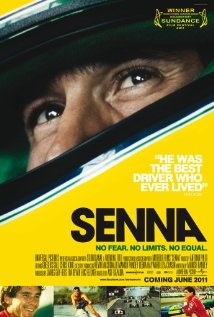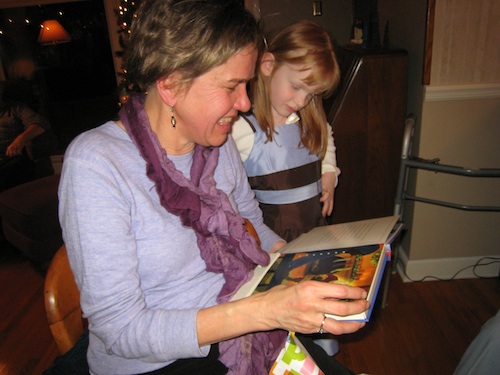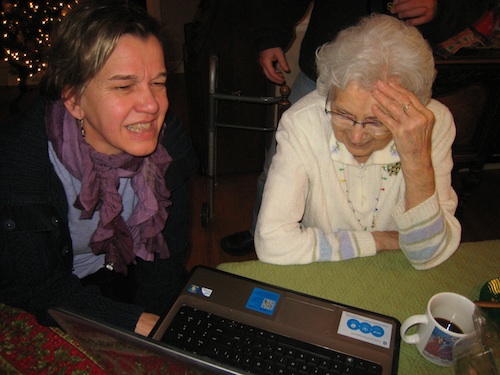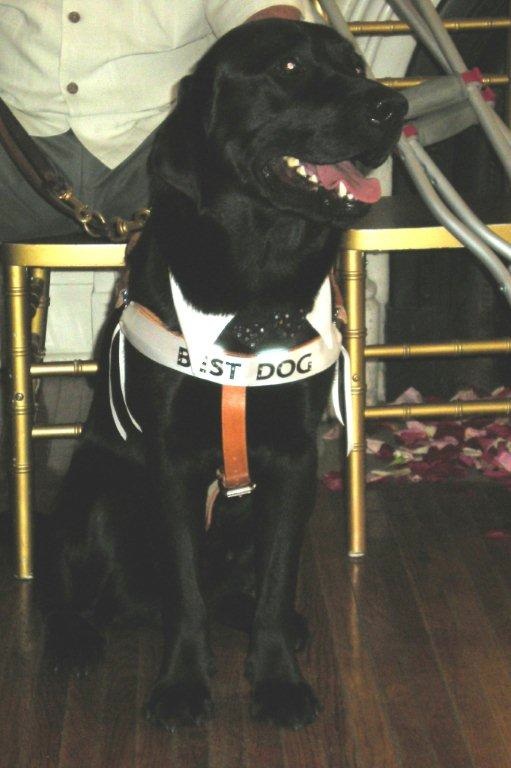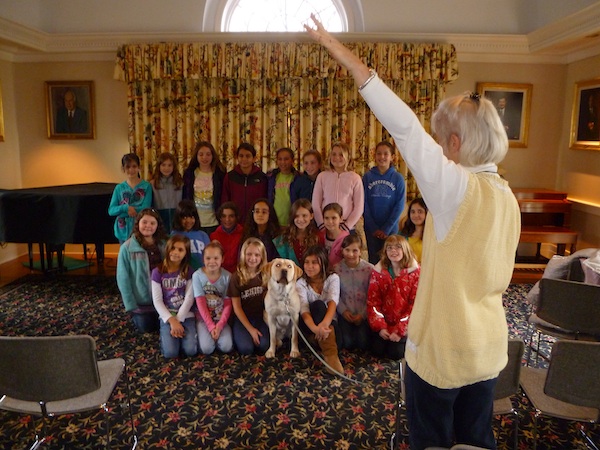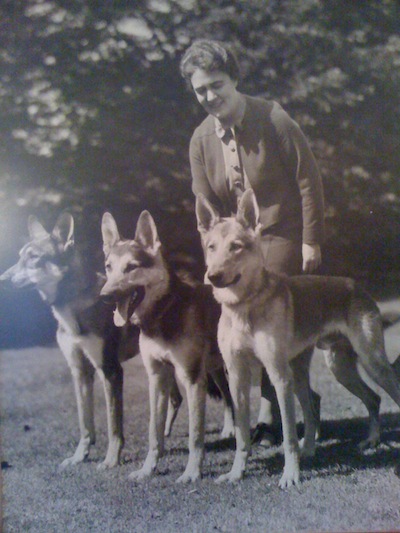Risky business: Going to the show
December 30, 2011 • 12 Comments • Posted in Beth Finke, blindness, Braille, guide dogs, Mike Knezovich, Seeing Eye dogs, travel, Uncategorized, writingHere’s Mike again, with a guest blog.
Beth has written — in her memoir and in blog posts here — about adjustments she and we learned to make to her blindness. For Beth, getting around is the most obvious challenge — how do I get to the post office? There are the basic features of day-to-day life: labeling spices, differentiating between shampoo and conditioner. By no means easy, but there are answers — a guide dog, braille on the spice jars, and a simple rubber band on the conditioner bottle.
When it comes to living life together, the question “What do you want to do tonight?” was a bigger problem than we might have predicted. For example, while we had not been avid movie-goers, we did get out to our share in Beth’s sighted days. We saw “Risky Business” in Urbana, and I remember that we — like the rest of the audience — hooted when Tom Cruise gets his Ivy League rejection letter, grins, and says, “Looks like the University of Illinois.” Before she lost her sight entirely, Beth was undergoing treatment and in a kind of vision limbo — some days good, some days bad, one eye OK, one eye bad, and other permutations. During that period we saw “Purple Rain.” Between what she could make out visually and the music, she enjoyed it as much as I did.
After the lights went out for good, we made a couple of attempts. Looking back they were pretty stupid — “Back to the Future” for example, or a rescreening of “E.T.” on campus. That’s when I learned how long a modern special-effects driven movie can run without a single line of dialog. Minutes, literally, went buy. And they were awful, because it drove home to both of us that this wasn’t going to work anymore. I felt bad and overcompensated by trying to translate in real time what the hell was going on (it was like a bad SNL skit). Beth felt bad that her predicament left us in that spot. Pretty awful. We tried a few more times — largely because we had this feeling that we were supposed to go on with our lives, and not let what had happened stop us.
Well, it certainly didn’t stop us. And we did have to go on with our lives. Just differently. We eventually realized that trying to force things was just dumb, and sure to drive us both into depression or stupid fights. Take vacations: If it’s all about the scenery, I go there myself or with other friends now. That doesn’t mean that Beth couldn’t enjoy the Grand Canyon or Glacier National Park on her own terms. It just means that if we’re going to use the money and time, there are better trips for us to take. Like going to New Orleans, where the food, music, and smells put us on pretty even ground.
As far as movies — after a long layoff we now do go occasionally. Usually, we’re careful to read enough about a prospective film to have confidence that it’s dialog-heavy. We saw the “Descendants” right after Thanksgiving. (Great performances, but I can’t honestly remember much more about it than that.) Last night, we took a little risk: We went to the Gene Siskel Film Center to see “Senna,” a documentary about the Brazilian Formula One race driver, Ayrton Senna.
I’d already seen it and was blown away by how much I liked it. I’m a casual race fan; I knew of Ayrton Senna largely because we have a couple friends who are fanatical about racing. Reviews of the movie made it clear that it was just a very well-told story about an enormously charismatic and enigmatic man. And that you didn’t need to know anything about racing to enjoy it. Sure enough, I was mesmerized by the story, which — although it captures the spectacle and intensity of racing — is as much a character study of Senna as it is a glimpse of Formula One racing.
“Senna” is certainly “visual” — all movies are, of course. But much of the story is told by narration by journalists and family members. In other words, I thought Beth might enjoy it. So when some friends of ours told us they were going, Beth — who likes popcorn and a night out as much as the next guy — suggested we go.
It was a mixed bag. While much, or even most of the narration was in English, I’d forgotten that a whole bunch was spoken in Portuguese — and subtitled. Yet other portions were spoken in sub-titled French.
But it wasn’t like the old days. We both made the best of it. I summarized only the most important bits of subtitled narration. Beth’s French is good enough that she actually could follow those passages. The lightly-buttered popcorn was perfect, as were the (all-red) Swedish Fish. Whit curled up at our feet and slept throughout. And we had a great chat with our friends about the movie afterward.
Which is all to say, not everything about getting older is bad. And if you get a chance, go see Senna, it’s well worth it.
